It’s been a while since we talked about France here. And I actually still have so much more to share. I hope you are not sick of hearing about our France trip yet. :)
So what more could we possibly have eaten in Paris in between Le Bistrot Paul Bert, the wonderful markets, the great little food shops around our apartment in the Bastille, and all the lovely cheeses we tried?
Well, there’s crêpes at la Crêperie Josselin, for one (67 rue du Montparnasse). This little restaurant is decorated in traditional Breton style — dim, dark wood, and small booths. And the staff is so friendly! The restaurant serves beautiful traditional Breton crêpes de sarrasin (also known as galettes de sarrasin) made of buckwheat. We ordered a small pitcher of delicious hard cider that you drink out of little bowls. Then I got a sausage and cheese crêpe, and B got one filled with goatcheese and honey.
A French person once told me that it is impossible to make excellent crêpes at home because you just don’t have the equipment for it. So I’m always appreciative of the perfectly crispy yet spongey, thin, pancake-like texture of a good French crêpe, and the crêpes de sarrasin are my favorite for their more hearty taste.
No trip to Paris is complete without a falafel sandwich from L’As du Falafel (34 Rue des Rosiers). It was fun even just waiting in line for one! (There are two lines — one for dining in and one for takeout, and the takeout line actually goes pretty quickly, especially with someone taking your order while you wait.) I loved their sign that said “Toujours imité, jamais egalé” (Always imitated, never equalled). :) I don’t think I’ve ever even had a falafel sandwich before, so I don’t have much by way of comparison, but the falafels themselves were indeed fluffy, with a nice and crispy exterior. And they were perfect with all the toppings, like pickled red cabbage, hummus, and harissa. I think it would’ve been best to get a bit of everything in one bite, but I ended up mostly eating things separately with a fork. Will have to work on that next time — as well as try some of their other offerings!
After our falafel sandwich, we walked over to Mariage Frères nearby to check out their famous teas (35 Rue du Bourg Tibourg and other locations). They have a little café in the back, but since we had baby E with us we figured sitting down for a leisurely tea and snacks was not going to be very leisurely. :) So instead I picked up some French Blue Earl Gray to bring home. It is so aromatic! I would love to try cooking or baking with it, like infusing it into some whipped cream or using it to flavor pastries. I have since also found a few Mariage Frerès teas at Williams-Sonoma.
The next subject is a bit of a touchy one: macarons. Before we dive into this, let me start by saying that I am far from a macaron connoisseur. Because, well, to be a connoisseur I would first have to love them. So, yes, I confess that, as many times as I have tried to understand and embrace the macaron craze, I’m afraid I still don’t really get it. To me, they kind of taste like… those Asian wafer cookies from my childhood. (My deepest apologies if I have offended anyone). One of my hopes for Paris was to hit up the most popular macaron shops, thinking surely my deficit of taste here was only because I had not tried a real macaron…
First, we stopped by the famous Pierre Hermé. This place was not what I had anticipated! I was expecting a cute little pâtisserie, and had I not already heard of the Pierre Hermé macarons, I would’ve taken this place for a perfume or jewelry shop. That’s how seriously they take their pastries here. Just look at this store front with window displays of abstract art…
It was so intimidating being inside. And of course no pictures were allowed (but of course I snuck one anyway). There was this noticeable hush over the entire place, signaling that we were in the presence of greatness. It was as though pastry chefs were in the back, carefully piecing these artful pastries together, and if anyone did any more than tiptoe or speak above a whisper, everything would be ruined. (If you’ve ever seen the documentary Kings of Pastry, you’ll know what I mean!) Once I bit into one of their macarons, though, I started to understand what all the fuss was about. But I am getting ahead of myself here…
Before we tasted anything, we also stopped by Ladurée, the famous pastry shop and tea house that invented the modern Parisian macaron. This place was closer to what I had imagined a macaron shop being — opulent, frilly, fancy tea room of the kind that little and big girls alike would want to dress up and have tea at. Just the look of the pretty shop actually made us want to stay and do just that (well, except that I was the only girl :), but we decided it was perhaps best to head home to put E to bed. So we picked up some macarons and headed back to the apartment.
After E’s bedtime ritual and after we had dinner ourselves, it was time to break out the macarons.
I’m afraid I no longer remember all the flavors we tried. But I do remember what I thought.
Now, there is a lot of contention over who makes the better macaron, Pierre Hermé or Ladurée. So, just remember that I am no macaron connoisseur… but… I really thought Pierre Hermé’s were decidedly more complex and refined. The Ladurée macarons were delicious, and I think their shop is a lot more fun. When it comes down to taste, though, the Ladurée macarons may have filled my mouth with their lovely flavors, but the Pierre Hermé macarons held amazing aromas that slowly wafted up through my nose and filled my entire head. (This makes perfect sense when you consider that flavor is really connected to your olfactory sense. More on the science of taste here). And that was when I understood why the Pierre Hermé shop looked more like a perfume store. Have you ever read the book or seen the movie Perfume? I can just imagine the Pierre Hermé pastry chefs experimenting with the flavors and combinations in the back (though, of course, in less morbid fashion than the Perfume story). The other thing was that the Ladurée macarons were single flavored, while the Pierre Hermé ones had various combinations, so there were layers of flavors in your mouth, with the aromas slowly evolving as they lingered in your olfactory passages. They really have elevated the macaron to an art form.
I wouldn’t say that I am now a macaron convert. I would love to have the Pierre Hermé flavor effect applied to, say, crème brûlée, or ice cream, or cupcake, or some other dessert. But I do think I can better understand the obsession with these dainty delicacies now, and I still would love to go back to Paris and have tea and macarons (and other desserts) at the beautiful Ladurée.
Have you had Pierre Hermé or Ladurée macarons? What did you think? What’s your favorite macaron place Stateside? I am always in awe of the beautiful macarons made by Ravenous Couple and all the interesting Asian–inspired flavors they post on their Instagram. :) If I were in town I would request a custom order from them for a certain upcoming celebration (more on that when the time comes :).
Lastly, we had a lot of other foods in Paris that were not tied to a particular standout place.
Like moules et frites… :)
… crème brûlée… and a few cafe crèmes…
… escargots…
… duck confit…
… and lots of steak tartare.
Lest you think all we did in Paris was eat, I have one more post coming up for you on the City of Lights, as well as a few from Provence. Stay tuned!
For more posts on France, see…
The Bastille Quarter
Bistrot Paul Bert
Markets (Paris)
Oh, the Cheeses We Ate
Not Eating in Paris
Markets (Provence)
Aix-en-Provence
(La Vraie) Bouillabaisse in Marseille
Provençal Specialties in Nice








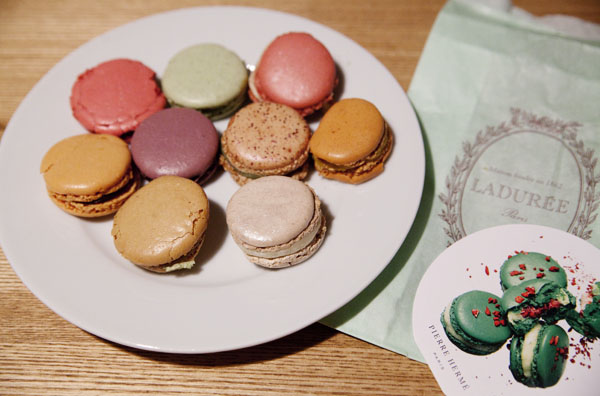
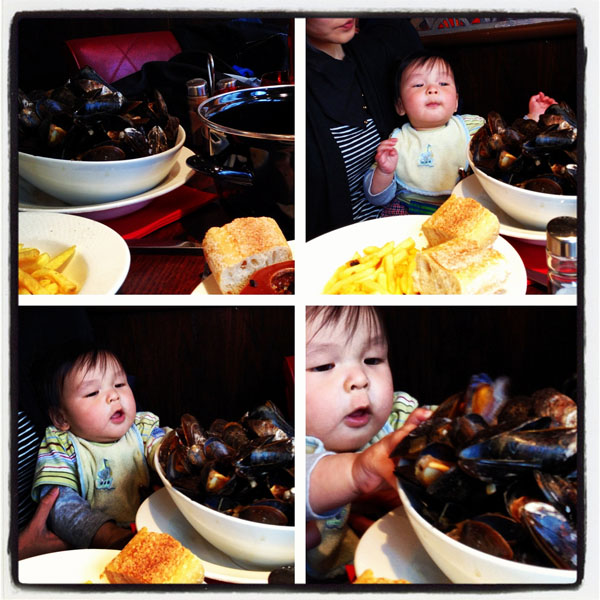



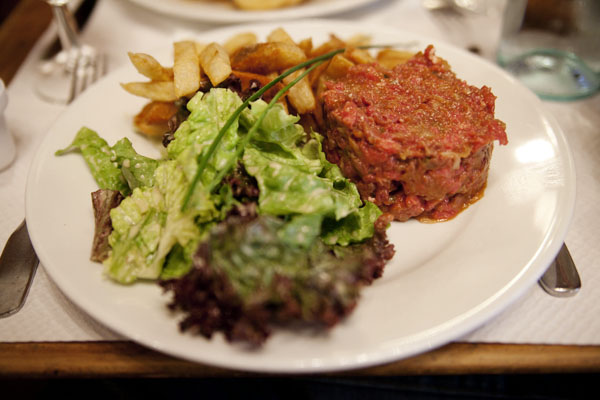

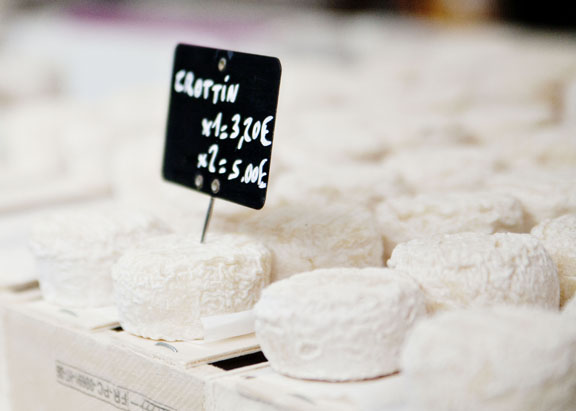
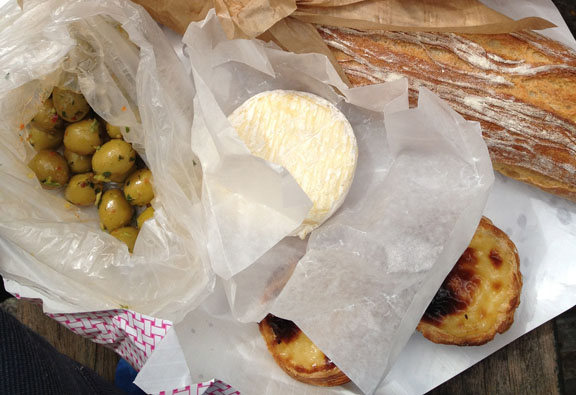
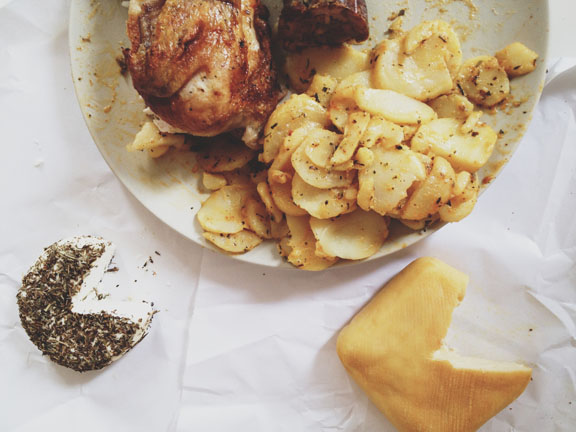












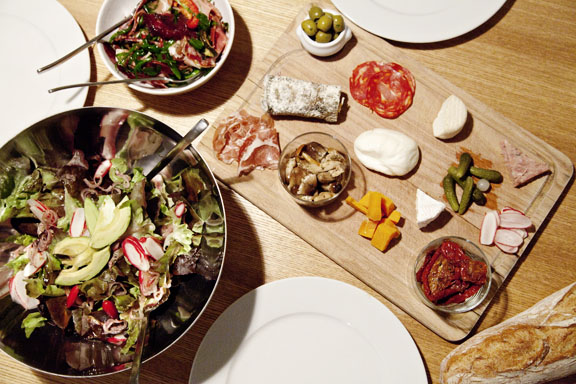


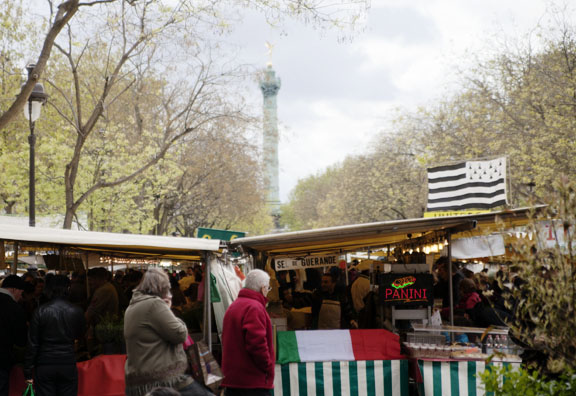


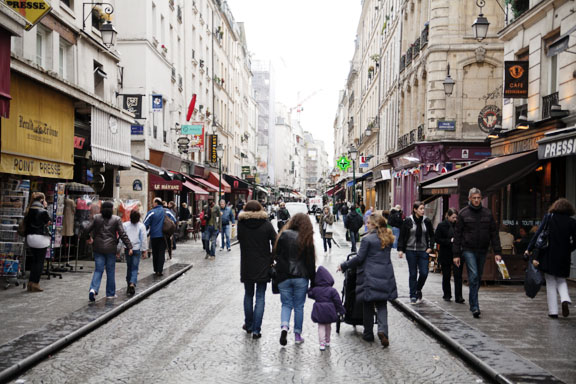



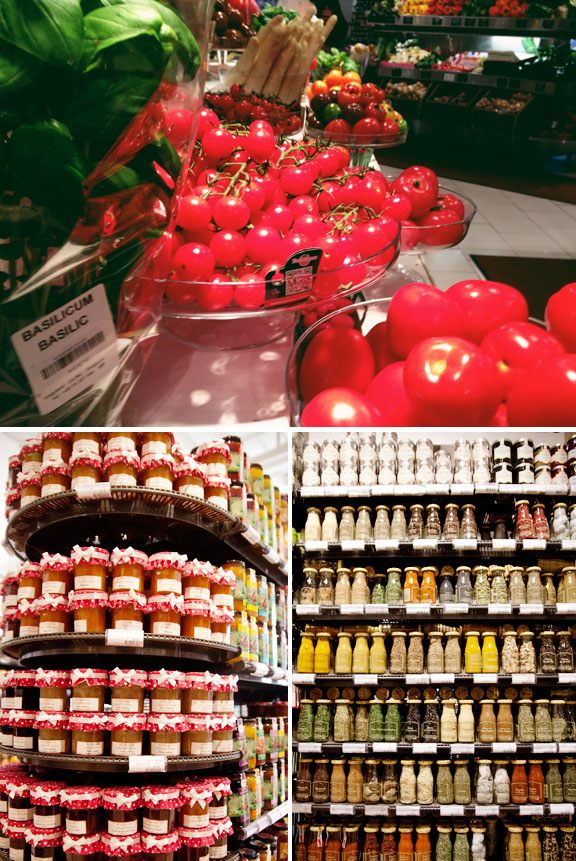









Connect with us